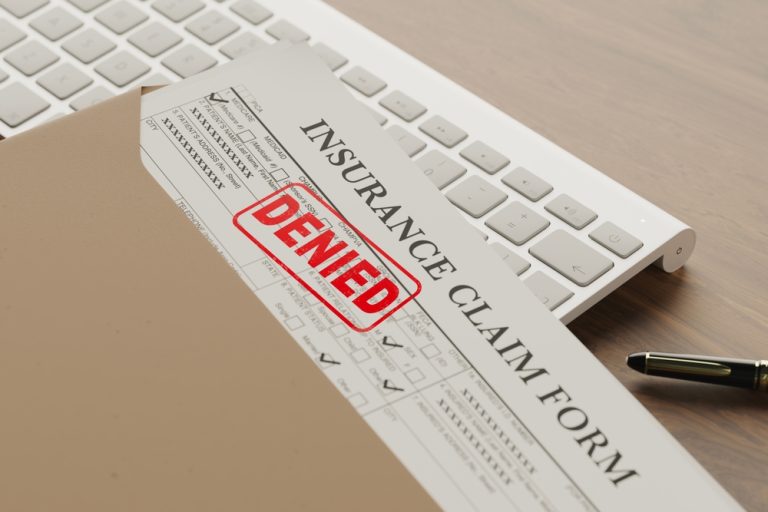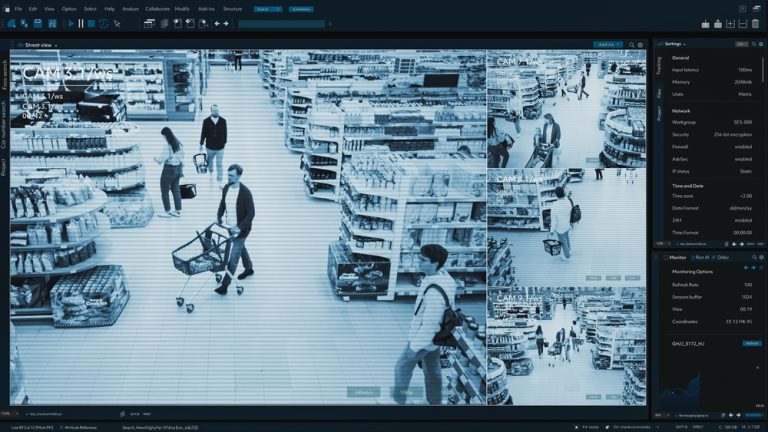Product Liability Update for Retailers: Inherit the Whirlwind
Product Liability Update for Retailers: Inherit the Whirlwind
The whirlwind builds slowly starting with a phone call, claim or suit papers hitting the inbox of the risk manager or in-house counsel. The matter involves a claim that a product sold at one of the chain retail stores is defective resulting in serious injuries. However, only the retailer is the subject of the claims. From this moment pro-activity is the standard operating procedure. The claim materials must be promptly and thoroughly evaluated for the next action steps including careful review and analysis of the claims and options for claim handling, including seeking indemnity from the product manufacturer. Typically a retailer will contract for indemnity with a product manufacturer as part of its preliminary negotiations251nbsp;However, there are circumstances such as manufacturer bankruptcies and spoliation where a retailer may be challenged in its attempt to tender a matter to a manufacturer or where indemnity may be unavailable leaving the retailer with defense as the only avenue.
The Basics
Product Identification
Due diligence includes fact checking and legal analysis travelling on parallel tracks. If no proof of purchase is offered with the preliminary information, fact investigation will preliminarily focus on whether the product is sold by the retailer and if so whether it is at stores in the area where the claim is being raised. Simultaneously, the most basic legal question to be answered is whether the jurisdiction in which the claim is made recognizes that a vendor of a product that it did not manufacture may be found liable for damages caused by the product. The majority of states recognize that in product liability cases “there are three potentially liable parties: the manufacturer, the wholesale distributor and the retailer of the allegedly defective product.” See generally West v. Kawasaki Motors Mfg. Corp., 595 So.2d 92, 95 (Fla. 3d DCA 1992) (emphasis supplied). Practically speaking, the manufacturer is typically the main target in the case with the retailer joined as insurance or sometimes in an attempt to defeat diversity.
The Closed Container Defense
In a shrinking number of states, the “sealed/closed container” defense eliminates retailer liability for products received by the retailer in a defective condition; where the retailer did not contribute to this defective condition; and where the retailer had neither knowledge of the defective condition, nor an opportunity to inspect the product that was superior to the knowledge or opportunity of the consumer. Atkins v. American Motor Corp., 335 So.2d 134 (Ala. 1976). However, this protection is also coming under attack in the minority of states that apply it. The Alabama Supreme Court recently concluded that the sealed container defense was not applicable to the retail seller of food products in claims asserting a breach of implied warranty under the UCC. See Sparks v. Total Body Essential Nutrition, Inc., et al. (Ala. 2009).
Preserving the Evidence
After it is determined that the product involved was sold by the retailer and the manufacturer is identified, the process of reviewing the matter for tender is next step. Again here, two paths should be pursued in simultaneous fashion. Evidence preservation must be undertaken and it should be comprehensive. Among the evidence to be obtained is the contract with the manufacturer, the product itself, in-store surveillance if applicable and any records that reveal the chain of custody of the product upon its receipt by the retailer. The ever growing body of law on spoliation and the continually developing issues surrounding preservation of electronic records make preservation of evidence priority one for the retailer. The pitfalls of spoliation of evidence will be discussed in the next section.
Review of the Claim Materials
A review of the matter reveals that the claims are of the type often asserted in a product liability case.
Strict liability
This theory of recovery applies to entities within a product’s distributive chain that profit from the sale or distribution of the product to the public. However, the classic theories on which the strict liability claim travels has little application to the retailer given the absence of the retailer’s involvement in the design and manufacture of the product. Courts have found that a retailer may be liable based on a patent defect, but that a retailer generally does not have a duty to inspect for latent defects. Carter v. Hector Supply Co., 128 So. 2d 390 (Fla. 1961). However in circumstances where the retailer has access to information about a product defect, such as a CPSC recall, the retailer could be liable for even an allegedly latent defect.
Negligence
Similarly, the retailer of a defective product may be held liable in a negligence action only if the plaintiff can establish that the retailer had actual or implied knowledge of the defect. Marrillia v. Lyn Craft Boat Co., 271 So. 2d 204 (Fla. 2d DCA 1973).
Breach of Warranty
Breach of warranty-based product liability claims usually focus on one of three types: (1) breach of an express warranty, (2) breach of an implied warranty of merchantability, and (3) breach of an implied warranty of fitness for a particular purpose. Claims of breach of warranty typically include allegations that:
- the plaintiff was a foreseeable user of the product;
- the product was being used in its intended manner at the time of injury;
- the product was sold by the retailer.
Unlike with strict liability, proof of actual or implied knowledge of a defect on the part of a manufacturer or retailer is not essential to liability in an action based on implied warranty.
Breach of Contract
Typically used in a situation where the product itself is damaged it is effected by the state interpretation of the economic loss rule. Breach of contract is typically not a claim made in a suit involving a personal injury.
State and Federal Consumer Protection Claims
Statutory remedies are often provided for defects that merely render the product unusable (and hence cause economic injury) but do not cause physical injury or damage to other property; the "economic loss rule" means that strict liability is generally unavailable for products that damage only themselves. Each state has its own version of laws intended to protect consumers. These kinds of allegations are rarely raised in personal injury suits. Claims may also be made for alleged violations of the federal Consumer Protection Safety Act (CPSA).
Indemnity
Once the evidence has been secured, the analysis of the contract for the preparation of a letter to the manufacturer is set. All too often tender letters can be formulaic in style offering a minimal amount of detail and making rejection of the tender far too easy. Instead standard operating procedure should call for a detailed letter with reference to the specific terms of the contract and the allegations stating why the retailer is seeking indemnification. It is also important to note that under the concept of common law indemnity, the mere selling of a defective product by a retailer does not constitute “fault.” A retailer who would be found at fault under a theory of negligence per se in strict liability and implied warranty could still have a right to indemnity from a manufacturer if it can establish that it was only derivatively or technically liable. The retailer held strictly liable to its customer in these circumstances may be entitled to recover common law indemnity from the manufacturer of the defective product.
Spoliation
Tendering a case is more challenging in situations where evidence cannot be located or has been disposed of or last. In such circumstances a manufacturer or its insurer will contend that it cannot be determined if the product is defective and that the act of disposing of the evidence has stripped the manufacturer’s ability to defend itself. In addition, when the claimant/plaintiff learns of the lack of evidence preservation, he will begin beating the spoliation drum and talking about an “adverse inference jury instruction.” This is a truly thorny problem. A proactive rule of retention of any of the evidence associated with the product will severely reduce or eliminate these scenarios. However, the fact that evidence is unavailable is not necessarily end game when dealing with a case involving a product sold at the retail store.
It is important to keep in mind that spoliation is defined as “[t]he intentional destruction, mutilation, alteration, or concealment of evidence.” Golden Yachts, Inc. v. Hall,920 So. 2d 777, 780 (Fla. 4th DCA 2006) (quoting Black’s Law Dictionary 1437 (8th ed.2004)) (emphasis added).
The spectrum of remedies [for spoliation] includes allowing the party who has been aggrieved by the spoliation to present evidence about the pre-accident condition of the lost evidence and the circumstances surrounding the spoliation, as well as instructing the jury on the inferences that may be drawn from the spoliation. These remedies may be cumulative, as determined by the judge from the circumstances of each case, in the exercise of broad discretion.
Id.
In the case of negligent spoliation, “courts prefer to utilize adverse evidentiary inferences and adverse presumptions during trial to address the lack of evidence.” Id. However, an adverse inference instruction does not relieve a party from its burden of proof at trial. Id. When a party commits intentional spoliation, courts generally strike pleadings or enter default judgments. Id. at 780 (citing Martino v. Wal-Mart Stores, Inc., 908 So. 2d 342, 346-7 (Fla. 2005)). In Florida, an independent cause of action for spoliation of evidence, as opposed to discovery sanctions, presumptions, or inferences, is not permitted. Id.
Practically speaking, spoliation may put the retailer in a difficult position but based the applicable laws of a jurisdiction, the retailer may still be able to proceed with a tender or at minimum joined of the manufacturer as a party.
Manufacturer Bankruptcies
A manufacturer bankruptcy can leave the retailers in a lurch but it does not leave the retailer without recourse in all situations. It is important to note that the bankruptcy only applies to the debtor. If the manufacturer is a subsidiary business the bankruptcy filing should be consulted to see if the manufacturer is included in the bankruptcy process. If it is not, then there may be no bankruptcy issue. It is also important to know that the insurance policies that may apply to the manufacturer and retailer,as an additional insured, are not covered by the bankruptcy and may be available to the retailer for the purpose of providing both indemnity and a defense providing that there is coverage to the retailer and the aggregate has not been reached under the policy limits.
The Manufacturer Inexplicably Rejects the Tender
There are a number of options that can be pursued in this scenario and it comes down to the strategy the retailer wants to pursue and perhaps claim value. The retailer can defend the action and pursue a claim for indemnity after the case is completed. In other situations, the retailer can file an action for a declaration under the terms of the agreement to ask a court to compel the manufacturer and/or its insurer to undertake the defense of the manufacturer and to provide indemnity where appropriate. Sometimes working the relationship channels can also resolved the roadblocks raised by the manufacturer.
CPSC, FDA and Attorney General Actions—A Whirlwind of a Different Kind
The Basics
The U.S. Consumer Product Safety Commission (CPSC) has jurisdiction over about 15,000 types of consumer products used in the home, in schools, and in recreation. While recalls are often lead by the manufacturer, the retailer has significant “front line” role and responsibilities.
CPSA Reporting Requirements
Section 15(b) of the Consumer Product Safety Act (CPSA) establishes reporting requirements for retailers of consumer products. Retailers must notify the Commission immediately if it obtains information which reasonably supports the conclusion that a product distributed in commerce (1) fails to meet a consumer product safety standard or banning regulation, (2) contains a defect which could create a substantial product hazard to consumers, (3) creates an unreasonable risk of serious injury or death, or (4) fails to comply with a voluntary standard upon which the Commission has relied under the CPSA.
The CPSC maintains that:
[C]ompanies involved in the manufacture, importation, distribution, or sale of consumer products should develop a system for maintaining and reviewing information about their products that might suggest a product defect or unreasonable risk of serious injury or death. Such information includes consumer complaints, warranty returns, insurance claims or payments, product liability lawsuits, reports of production problems, product testing or other critical analyses of products, and the like.
Retailers and distributors may satisfy their reporting obligations in the manner described above. Alternatively, a retailer or distributor may send a letter to the manufacturer or importer of a product describing the risk of injury or death or the defect associated with the product or its failure to comply with an applicable regulation and forward a copy of that letter to the Division of Recalls and Compliance. A distributor or retailer receiving product hazard information from a manufacturer or importer or other source must report to CPSC unless the firm knows the CPSC has been adequately informed of the defect, failure to comply, or risk. Section 15 requires immediate reporting. Typically this means within 24 hours of obtaining information.
The CPSC considers a company to have obtained knowledge of product safety related information when that information is received by an employee or official of the retailer who may reasonably be expected to be capable of appreciating the significance of that information. Once that occurs, under ordinary circumstances, five working days is the maximum reasonable time for that information to reach the chief executive officer or the official assigned responsibility for complying with the reporting requirements.
The CPSC evaluates whether or when a firm should have reported. This evaluation will be based, in part,on what the company actually knew about the hazard posed by the product or on what a reasonable person, acting under the circumstances, should have known about the hazard while exercising due care.
Responding to CPSC Notification of Violative Product Status
When the CPSC Compliance Officer notifies the retailer in a LOA (Letter of Advice) that a product it distribute fails to comply with a CPSC statute, standard or regulation, the retailer may disagree with the staff’s determination.
In response to the LOA, the retailer may submit to the Compliance Officer evidence and arguments that support why it believes the product is not violative. Such evidence may consist of:
- results of tests indicating the product complies with the applicable regulation;
- marketing data indicating the product is not intended for the population group protected by the regulation;
- any other type of information.
If the information does not, in the staff’s opinion, refute the staff’s claim that the product is violative or covered by a specific regulation, the CPSC staff generally will notify the retailer in writing why it believes the information submitted is insufficient before pursuing any enforcement action against the retailer.
If a retailer continues to disagree with the staff and declines to take corrective action, the staff may request the CPSC to approve appropriate legal proceedings including issuance of an administrative complaint, injunctive action, seizure action, or such other action as may be appropriate.
Sanctions Under the CPSC Statutes
Sanctions include both civil fines against the responsible firm and individual, up to a maximum of $1.825 million (69 Fed. Reg. 68884, November 26, 2004) and criminal fines, and imprisonment of the responsible individual(s) for not more than one year. In addition, firms and individuals may be enjoined from continuing to violate CPSC statutes and regulations, and pursuant to court order, violative products may be seized to prevent distribution in commerce.
Seizure of Violative Products
Products that are in violation of an applicable standard or regulation are subject to seizure and condemnation proceedings under the various statutes.
Recalls
Letter of Advice (LOA)
Once the CPSC staff determines that a product is in violation of a CPSC statute or regulation, it will notify the retailer in the LOA that corrective action to address the violation is warranted. The LOA generally will also include specific corrective actions the CPSC staff believes are appropriate to address the violation.
Where appropriate, based on the nature of the hazard and the likelihood of injury associated with the non-complying product, the compliance staff will request that the firm recall the product from the marketplace, including consumers who already own the product.
The CPSC recommends that companies be prepared to address issues that invariably arise in recalls, such as:
- How did the product fail to comply with government safety regulations?
- Where are the unsafe products located? How many are there?
- Has the firm started reviewing existing databases to identify potential product owners, e.g., product registration and customer service records?
- Has the firm drafted a press release announcing the recall? What other forms of public notice are needed?
- Has the firm set-up a toll-free telephone service that will be able to handle the number of calls expected after the recall is announced?
- Is the firm prepared to deploy people and/or fund an effort to provide replacement parts for defective products or to exchange them for new products that do not have the problem?
- Is the firm prepared to monitor the product recall and provide timely reports to the Commission on the progress of the recall?
Fast Track Product Recall Program
A retailer that files a Section 15(b) report may wish to use of an alternative procedure that the CPSC has established to expedite recalls. The program is called the "Fast Track Product Recall Program." If a company reports a potential product defect and, within 20 working days of the filing of the report, implements with CPSC a consumer-level voluntary recall that is satisfactory to the staff, the staff will not make a preliminary determination that the product contains a defect which creates a substantial product hazard.This program allows the staff and company to work together on a corrective action plan almost immediately, rather than spending the time and other resources necessary to investigate the reported defect further to determine whether it rises to the level of a substantial product hazard.
Recall Coordinator
Designating a firm official or employee to serve as a "recall coordinator" is a significant step that a firm can take to meet its product safety and defect reporting responsibilities. Ideally, this coordinator has full authority to take the steps necessary (including reporting to the Commission) to initiate and implement all recalls, with the approval and support of the firm’s chief executive officer.
The CPSC suggests that the recall coordinator have the following qualifications and duties:
- Knowledge of the statutory authority and recall procedures of the CPSC;
- Ability and authority to function as the central coordinator within the firm.
- Responsibility for keeping the firm’s chief executive officer informed about reporting requirements and all safety problems or potential problems that could lead to product recalls;
- Responsibility for making decisions about initiating product recalls;
- Authority to involve appropriate departments and offices of the firm in implementing a product recall;
- Responsibility for serving as the firm’s primary liaison with CPSC.
The firm should institute a product identification system if one is not now in use. Model designations and date-of-manufacture codes should be used on all products. If a product recall is necessary, this practice allows the firm to identify easily all affected products without undertaking a costly recall of the entire production. Similarly, once a specific product has been recalled and corrected, a new model number or other means of identification used on new corrected products allows distributors, retailers, and consumers to distinguish products subject to recall from the new items.
Recent CPSC Actions
Crib Recall
The November 23, 2009, voluntary recall included more than 2.1 million Stork Craft drop-side cribs, including about 147,000 Stork Craft drop-side cribs with the Fisher-Price logo. The recall involves approximately 1,213,000 units distributed in the United States and 968,000 units distributed in Canada. According to the CPSC, the cribs’ drop-side plastic hardware can break, deform, or parts can become missing. Additionally, the drop-side can be installed upside-down, which can result in broken or disengaged plastic parts. All of these problems can cause the drop-side to detach in one or more corners.
Phthalates Esters
The Congressionally mandated ban that became effective on February 10, 2009 as part of the CPSIA was signed into law by President Bush on August 14, 2008. The industry response by many retailers after the law was signed was to announce that by the end of 2008, they would remove phthalate-containing toys from their stores. Efforts to allow for sale of merchandise already purchased before the date of the ban were thwarted by several “watchdog” groups resulting in a February 2, 2009 ruling in the United States District Court of New York.
Recent FDA Actions
Bisphenol A (BPA)
Bisphenol A (BPA) is a high production volume chemical used primarily in the production of polycarbonate plastics and epoxy resins. BPA can leach into food from the protective internal epoxy resin lining of canned foods and from consumer products such as polycarbonate tableware, food storage containers, water bottles, and baby bottles. The degree to which BPA leaches from polycarbonate bottles into liquid may depend more on the temperature of the liquid or bottle, than the age of the container. U.S. Dept. of Health & Human Services (N.I.H –H.H.S.), Bisphenol A Fact Sheet, September 2008. BPA has been in use for decades, and has been long regarded as safe by FDA.
The House of Representatives has passed a bill called the “Food Safety Enhancement Act of 2009 (H.R. 2749).” One of the provisions of that bill deals with BPA. Section 215 of that bill directs the Secretary of Health and Human Services to notify Congress, by December 31, 2009:
a) Whether the available scientific data support a determination that there is a reasonable certainty of no harm, for infants, young children, pregnant women and adults for approved uses of polycarbonate plastic and epoxy resin made with bisphenol A in food and beverage containers, including reusable food and beverage containers, under the conditions of use prescribed in current Food and Drug Administration regulations.
b) If the Secretary concludes that such a determination cannot be made for any approved use, the Secretary shall notify the Congress of the actions the Secretary intends to take under the Secretary’s authority to regulate food additives to protect the public health.
Such actions might include:
a) Revoking or modifying any of the approved uses of bisphenol A in food and beverage containers, and
b) Ensuring that the public is sufficiently informed of such determination and the steps the public may take in response to such determination.
Wal-Mart, CVS, and other major retailers have stopped selling baby bottles and other products made with BPA. The retailers’ decisions followed the April 18, 2008 announcement by Canadian health officials to designate BPA as a "dangerous" chemical and ban its use in baby bottles.
The litigation has not been far behind with an MDL being handled by the United States Court for the Western District of Missouri. In one such suit a California woman has initiated a class action accusing bottle manufacturer Nalge Nunc International Corp. of suppressing key information about the potential health risks of its hard-plastic sports bottles containing bisphenol A. See Felix-Lozano v. Nalge Nunc International Corp., E.D. Cal., No. 08-cv-854, filed 4/22/08). The suit comes despite the fact the manufacturer already announced it was phasing out the production of bottles using the chemical within a few months. Plaintiff does not claim use of the bottles has harmed her or her children’s health. As is typical with product claims in which the plaintiff was not injured by the product, the suit alleges fraud, and violations of consumer fraud laws, specifically the Unfair Competition Law, False Advertising Law, etc.
Unilever Nationwide Recall of Slim-Fast Ready-to-Drink Products
On December 3, 2009, Unilever United States, Inc., in cooperation with the FDA, issued a nationwide voluntary recall of all Slim-Fast® ready-to-drink RTD products in cans, due to the possibility of contamination with Bacillus cereus, a micro-organism, which may cause diarrhea and possibly nausea and/or vomiting. The products were sold in stores nationwide and Unilever’s recall included all products in distribution centers, on-shelf or in back rooms in retail outlets or in consumers’ homes.
Pistachio Product Recall
The FDA has established a searchable database on its website that includes brands of recalled pistachios and pistachio products. These products may contain Setton Pistachio products that the Setton firm has recalled because of potential Salmonella contamination.To date, there is no conclusive evidence that links the recalled pistachio products to cases of human illness. The number of new recalls has dropped dramatically, and very few additions are being made to the recall database at this time. The FDA’s advice to retailers is to continue to safely dispose of any recalled products they have in their stockrooms and to avoid the products for which new recalls are being issued. The FDA has advised wholesalers, retailers, and operators of restaurants and food-service establishments not to sell or serve pistachios or pistachio-containing products unless it can be determined that they do not contain the recalled Setton products.
Recent Attorney General Actions
New York Attorney General’s Action Against CVS & Rite Aid
On December 5, 2008, New York Attorney General Andrew Cuomo filed a lawsuit against CVS Caremark over allegations that since 2006 the companies had sold expired products at stores statewide. On November 10, 2009, The Attorney General’s office reached an $875,000 settlement with CVS. A $1.3 million dollar settlement with Rite Aid was reached in December 2008.
Class Actions Lawsuits—Whirlwind to Hurricane?
The Basics
Class actions are an exception to the general rule that litigation is conducted by individual named parties only. Consequently, the trial court must conduct a careful analysis to determine whether the elements of the class action rule have been met. Butler,985 So.2d at 1136 (citing Baptist Hosp. of Miami v. Demario, 661 So.2d 319, 321 (Fla. 3d DCA 1995). In so doing, the trial court first must find that the threshold requirements are satisfied.
These requirements are:
(1) the members of the class are so numerous that separate joinder of each member is impracticable (“numerosity”); (2) the claim or defense of the representative party raises questions of law or fact common to the questions of law or fact raised by the claim or defense of each member of the class (commonality); (3) the claim or defense of the representative party is typical of the claim or defense of each member of the class (typicality); and (4) the representative party can fairly and adequately protect and represent the interests of each member of the class (adequacy of representation). Id.
To certify a class, not only must common questions exist, but those common questions must predominate over individual questions. Id. In product liability cases, courts require that class members suffer damage from the same type of defect. Id. Courts have refused to certify classes were there is no common defect for fear of violating the defendant’s due process rights. Id. Furthermore, courts have denied class certification where the class representative has attempted to seek compensation not only for class members who have been damaged by a defect in a product, but also for those consumers who have purchased the same product and have not yet suffered any damages. Id.
The class will not be certified if the court finds that proof by the class representative of any deficiencies in the product purchased by the representative will not advance the cause of class-wide relief for any other class members.
In product liability cases where no one set of operative facts establishes liability, where no single proximate cause applies to each defendant, and where individual issues outnumber common issues, trial courts are hesitant to certify class actions. Id. at 1141.
For example, in Volkswagen of Am., Inc. v. Sugarman, 909 So. 2d 923 (Fla. 3d DCA 2005), the class plaintiffs sued Volkswagen and a local dealer, seeking financial damages for an alleged design defect wherein the front bumper assemblies of 1999–2002 model-year Volkswagen Jettas hooked onto the wheel stop or curb when the vehicles were parked, such that when the driver backed the Jetta out of the parking place, the retainers holding the front bumper assembly detached, causing damage from $50 to $250. The appellate court reversed an order certifying a class on the ground that the predominance requirement is not satisfied when the claims involve case specific factual determinations. Sugarman, 909 So. 2d at 924.
Finally, “Courts are hesitant to certify classes in litigation where individual use factors present themselves…The administrative burdens are frequently too unmanageable for a class action to make sense in such cases.” Butler,985 So.2d at 1142 (citing Sanneman v. Chrysler Corp., 191 F.R.D. 441, 449 (E.D.Pa.2000)).
A Sample Class Action—In re Mattel: Lead Toys Class Action
In November 2008, numerous class action complaints were filed against various defendants, including Mattel, Fisher-Price, Target, Toys “R” Us, Wal-Mart Stores, KB Toys and Kmart. According to the class actions, certain toys manufactured and sold by the defendants contained unsafe levels of lead paint. The toys at issue in the class action lawsuits were alleged to be subject to recalls ordered by the CPSC in which the manufacturer defendants provided replacement toys.
The Judicial Panel on MDL consolidated the class action lawsuits in the Central District of California, which eventually granted a motion to certify the litigation as a class action. The consolidated class action complaint sought damages under theories of strict liability and negligence, breach of express and implied warrantees, and for violations of the CPSA and California’s Consumers Legal Remedies Act (CLRA).
The class action’s negligence claim against the retailer defendants survived a motion to dismiss. While defendants argued that they had no duty to inspect the toys for latent defects, the federal court held that the retailer defendants had “a duty to inspect a product if it knows or has reason to know that the product might be dangerous,” and according to the class action, defendants “knew or had reason to know that the toys that are the basis of this suit were defective by virtue of several recalls of toys from China made with lead paint…, reports from the CPSC about harm from small magnets, and a 2006 recall of Mattel magnet toys under similar circumstances.”
It is instructive that the district court agreed with defense attorneys that the class action claims under the CPSA fail as a matter of law because “[p]laintiffs have not alleged a violation of any consumer product safety rule promulgated by the CPSC or other act of the CPSC with respect to the magnet toys or the toy blood pressure cuffs.” Additionally, “Plaintiffs’ failure to identify a consumer product safety rule or order of the CPSC is fatal as there is no private right of action under the CPSA itself absent a specific rule promulgated by the CPSC.”
Conclusion
There are a host of product liability related concerns facing the retailer in today’s market. Advance planning and staged proactive early management of issues to cut them off before they develop is a great tool the retailer has in its arsenal for limiting long term exposure to complex product liability litigation whirlwind.






